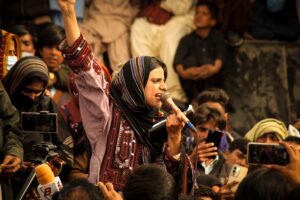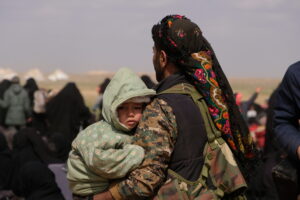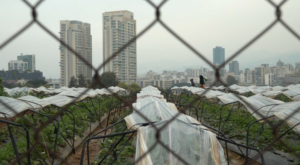Conflict and Looting Endangers Syria’s Precious Heritage
The country's ongoing civil war has put the physical remains of its ancient history at risk of destruction.
Syria’s civil war has put the country’s heritage sites at risk of destruction.
Emma Pearson, an editor at the Forum for Discussion of Israel and Palestine, and Katie Welsford, Middle East researcher for the Institute for Islamic Strategic Affairs, published an article Wednesday about the development in the English language edition of Le Monde Diplomatique:
Much of the country’s cultural heritage has been damaged in this long and violent war. Castles and fortresses, such as Krak de Chevaliers, have been used as military bases — both rebel and regime forces acknowledge their strategic advantages. Ancient cities such as Apamea and Bosra have seen columns and mosaics destroyed. Mosques and churches have been shelled. Then there are the ‘living archaeological sites’, embedded within Syria’s cities, often caught up in aerial bombing and frontline fighting. In the winding alleyways of Aleppo’s Al-Madina souq, parts of which date back to the 13th-century, historical memory blended with bustling daily life until its ancient structures went up in flames in September 2012.
Radical opposition groups have intentionally destroyed historical artifacts that contradict their religious visions — a common occurrence in modern conflict according to nationalism and identity expert, Anthony Smith. In February 2013 the Al-Qaida-affiliated Jabhat al-Nusra beheaded a statue of the blind Abbasid poet and philosopher, Abul ‘Ala a-Ma’arri, in his hometown of Ma’arat al-Nu’man. In Ma’loula, one of the last remaining villages where Western Aramaic was spoken, churches have been ransacked. In Raqqa, Islamic State (IS) militants have taken a hammer to an 8th-century Assyrian statue, bulldozed two statues of lions and blown up a 6th-century Byzantine mosaic just outside the city.
Some Syrians desperate for cash have taken to digging in the soil around their homes. More organized groups, including militant organizations looking to fund their fighting, have excavated world heritage sites with bulldozers. Pearson and Welsford quote Dr. Amr al-Azm, associate professor of Middle East history and anthropology at Shawnee State University, as saying, “People are well aware of the treasures beneath the ground in Syria, and the speed at which they are digging them up is hugely concerning.” A vast black market in antiques has popped up, and a few people are getting rich.
Other Syrians are working to save ancient structures and objects by dismantling and moving them to sites where they are protected. Dr. Emma Cunliff at Durham University, who helped organize a conference about preserving heritage sites during war and conflict, says workers sometimes hang curtains to avoid fire from snipers. “One of them was still shot,” she said. “Fortunately, he survived, but it just shows the dangers these guys face as they attempt to complete their work.”
Pearson and Welsford continue:
Archaeologists and anthropologists are increasingly concerned by the threat that looting and destruction pose to Syria’s identity. The welfare of ancient ruins may seem trivial in a war which has killed over 191,000 people, but it is not simply a case of protecting history. Serving as tangible links to a shared past, historical sites can help heal fractured political realities by building and sustaining a sense of national unity.
Read more here.
— Posted by Alexander Reed Kelly
Your support matters…Independent journalism is under threat and overshadowed by heavily funded mainstream media.
You can help level the playing field. Become a member.
Your tax-deductible contribution keeps us digging beneath the headlines to give you thought-provoking, investigative reporting and analysis that unearths what's really happening- without compromise.
Give today to support our courageous, independent journalists.






You need to be a supporter to comment.
There are currently no responses to this article.
Be the first to respond.